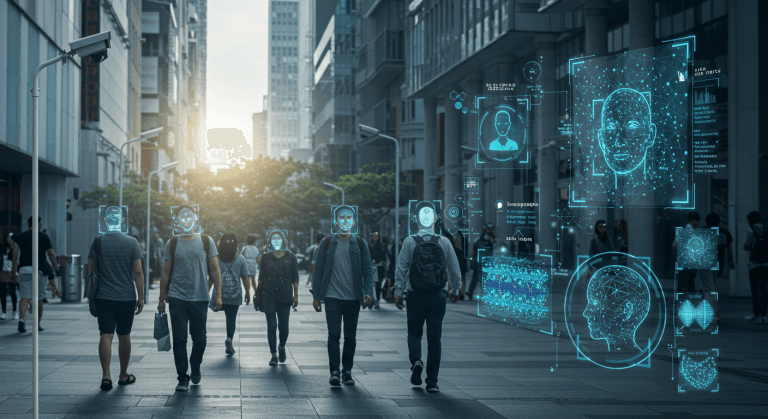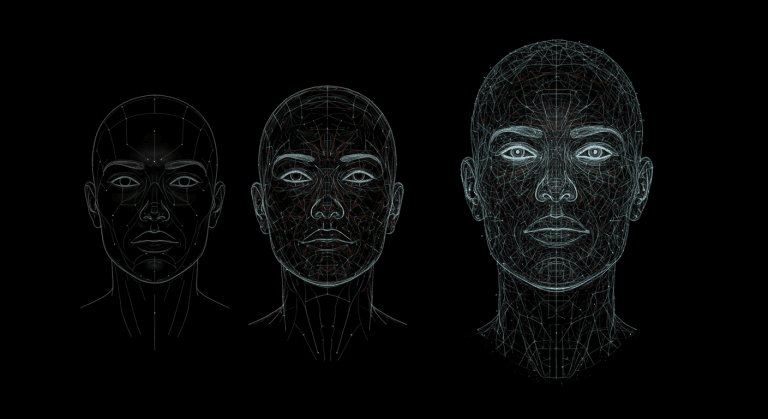Unlocking the Future: Real-time Face Recognition – Tools and Cutting-Edge Algorithms You Need to Know

As Prexable moves into the second phase of its development journey, we are focusing on enhancing user authentication through advanced technologies. Among the methods we’re exploring, Face Recognition and Activity Recognition stand out as pivotal components in shaping secure and seamless experiences. This blog post is the first in a series that will delve deeper into these technologies, starting with real-time face recognition—a cornerstone of modern authentication solutions.
Real-time face recognition has revolutionized industries by offering a blend of convenience and security, making it an essential tool for applications ranging from smartphone unlocking to enterprise-level access control. In this article, we will uncover the most impactful open-source libraries and tools, along with the cutting-edge algorithms that power them.

Why Real-Time Face Recognition Matters
The demand for secure, efficient, and user-friendly authentication methods is growing rapidly. With cyber threats on the rise and the increasing adoption of remote and digital platforms, facial recognition provides an intuitive solution. It leverages unique facial features to verify identities, ensuring that only authorized individuals can access critical systems or information.
At Prexable, integrating real-time face recognition into our authentication process will help us deliver:
- Enhanced Security: Minimizing the risks of unauthorized access.
- Seamless User Experience: Reducing reliance on cumbersome passwords.
- Future Scalability: Building a robust foundation for multi-factor authentication systems.
Top Open-Source Tools for Real-Time Face Recognition
For developers and businesses looking to incorporate facial recognition, open-source tools provide a cost-effective entry point. Below are some noteworthy options:
1.Dlib
- Features: High-quality face detection and recognition using deep learning.
Applications: Real-time tracking and large-scale image analysis.
2.OpenCV
- Features: A versatile library with pre-trained models for face detection
Applications: Ideal for integrating facial recognition with other computer vision tasks.
3.DeepFace
- Features: A Python library offering support for multiple face recognition models.
Applications: Quick deployment of recognition systems with minimal configuration.
4.Face_recognition (by Adam Geitgey)
- Features: User-friendly Python library based on Dlib.
- Applications: Fast and simple face recognition tasks with real-time capabilities.
5.InsightFace
- Features: State-of-the-art algorithms for face detection and alignment.
- Applications: Optimized for mobile and real-time edge devices.

Cutting-Edge Algorithms Driving Face Recognition
Face recognition has advanced thanks to the evolution of machine learning and deep learning algorithms. Here are some of the key algorithms powering these systems:
- Convolutional Neural Networks (CNNs)
CNNs play a crucial role in identifying facial features and learning their unique representations. Frameworks like ResNet and MobileNet have been extensively adopted for this purpose. - FaceNet
This algorithm maps facial images to a compact Euclidean space, making it easier to compare and identify faces with remarkable accuracy. - MTCNN (Multi-task Cascaded Convolutional Networks)
Widely used for detecting and aligning faces in real-time, MTCNN excels in handling varied lighting and pose conditions. - DeepID Series
Among the first algorithms to explore deep learning for face recognition, DeepID laid the groundwork for many modern approaches. - HyperFace
This algorithm focuses on multitask learning, allowing it to detect faces, landmarks, and poses simultaneously for robust recognition.
Conclusion
As we embark on integrating face recognition into Prexable’s authentication solutions, it is clear that this technology represents a leap forward in balancing security and user convenience. By leveraging state-of-the-art tools and algorithms, we aim to provide solutions that not only meet today’s demands but also pave the way for future advancements.
Stay tuned for our upcoming posts, where we’ll dive deeper into related topics like Activity Recognition and their role in creating a comprehensive authentication framework. Let’s unlock the future together.